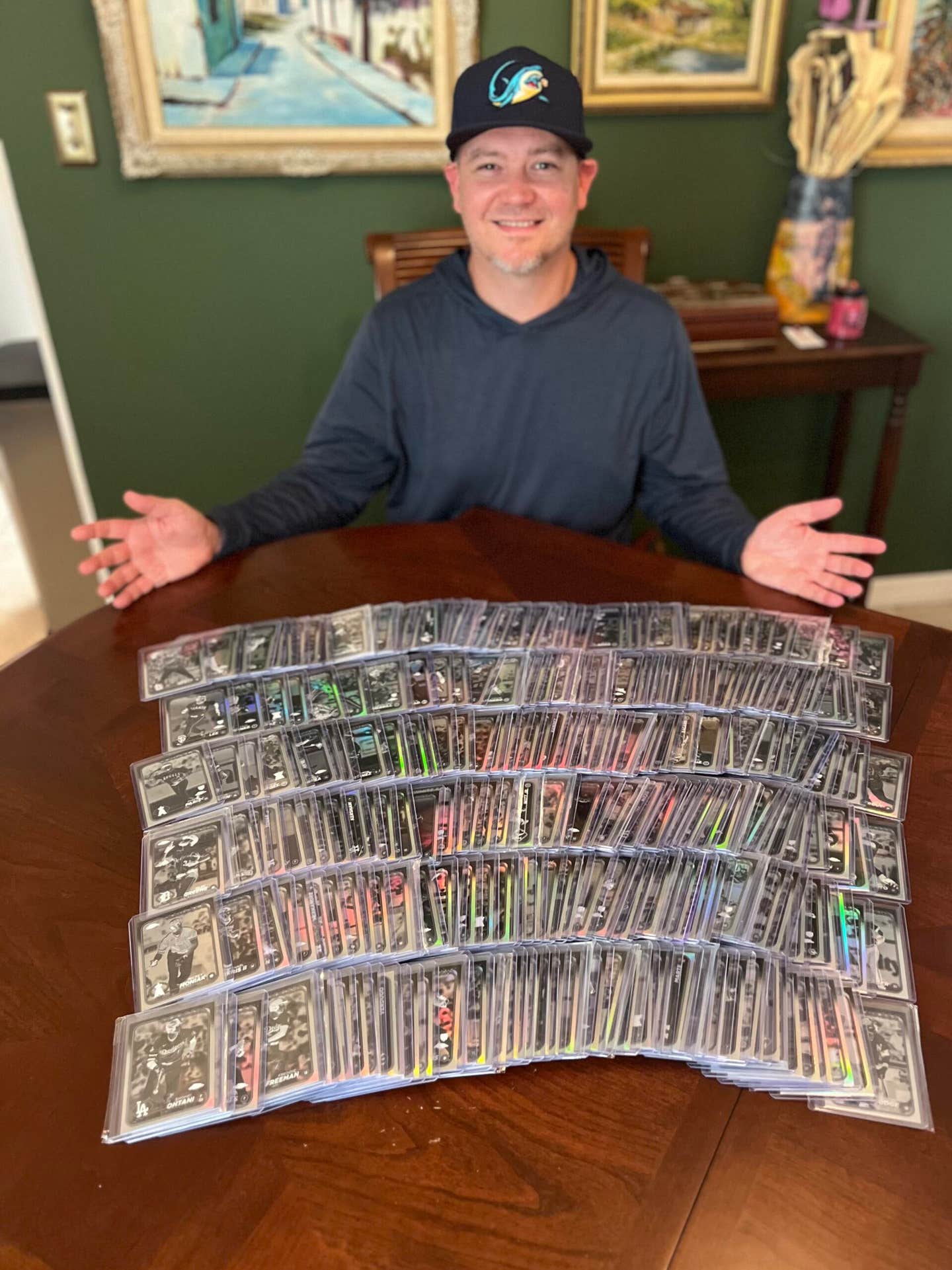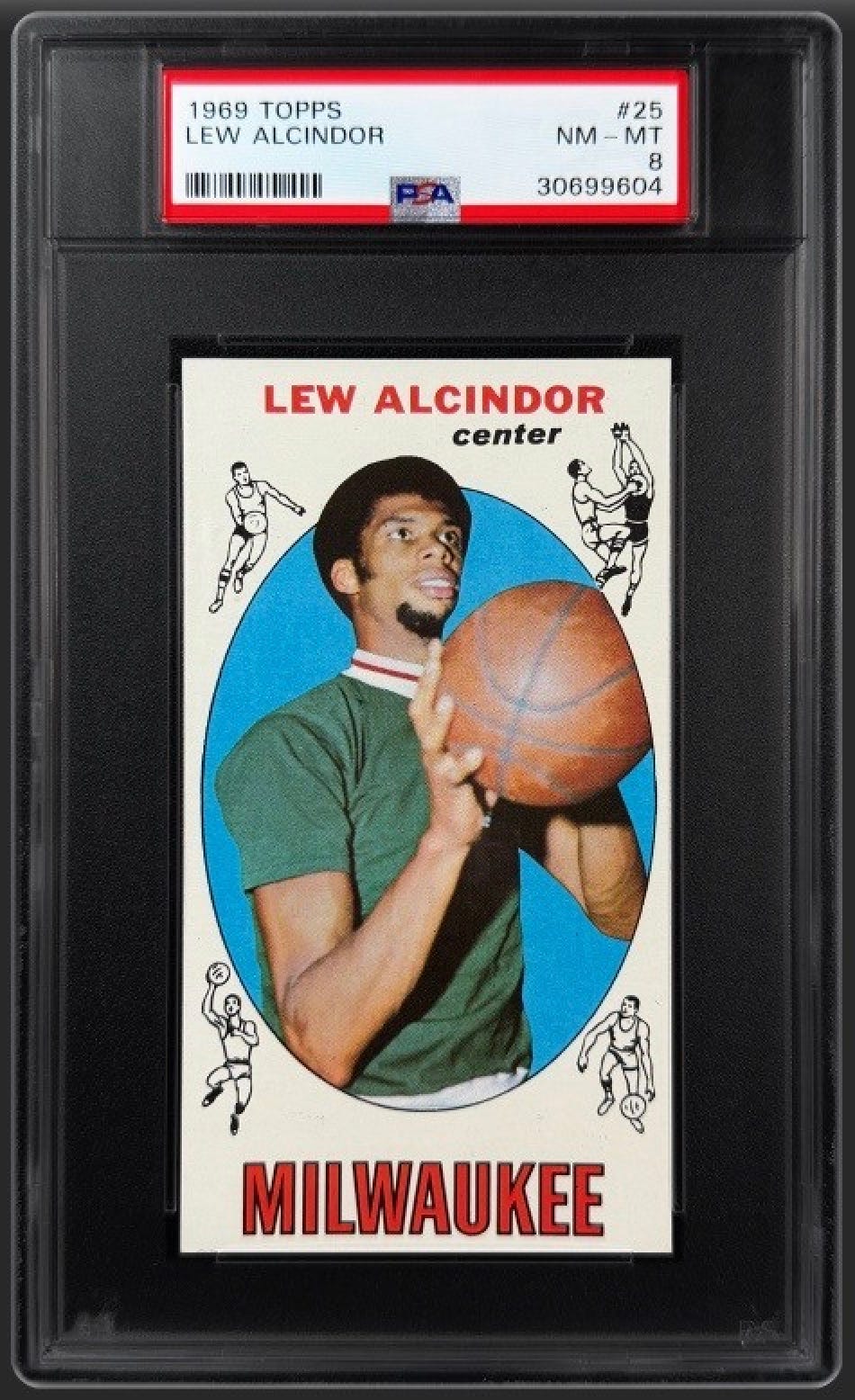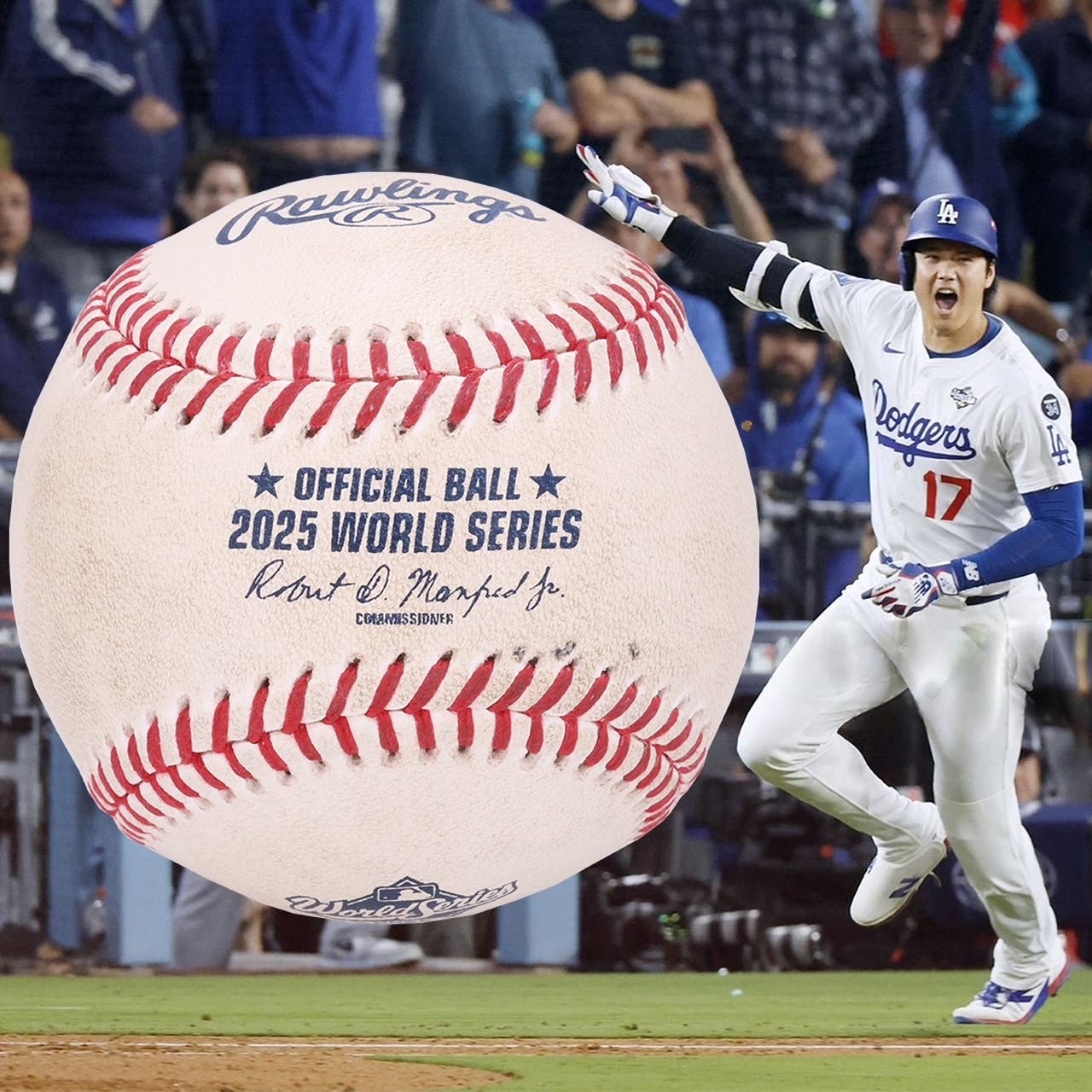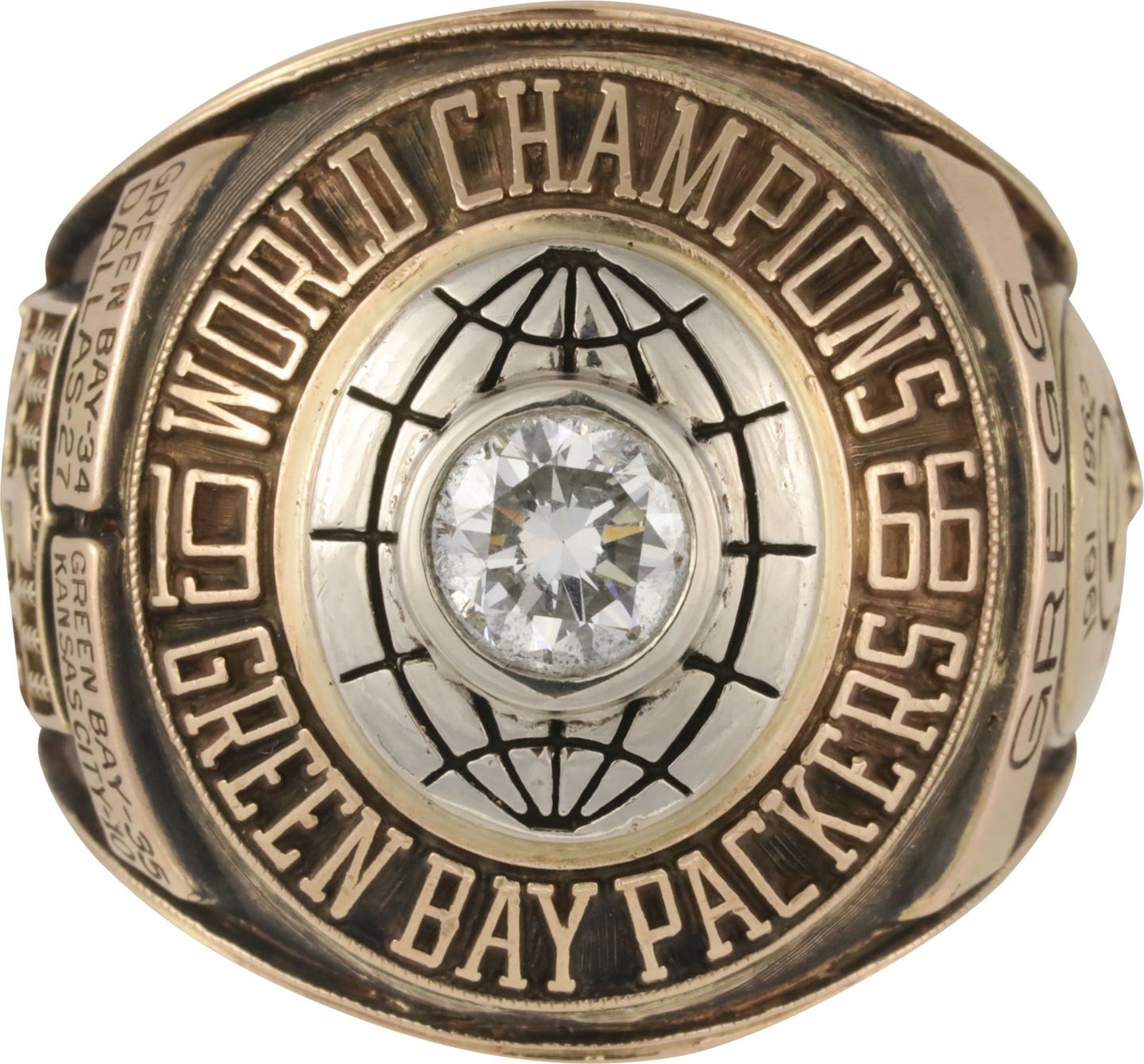Collecting 101
A collector’s guide to the T206 White Border set
This is the second installment in the T206 Archives Series by noted collector Scot Reader.
Production Process: The images on the front of T206 cards are lithographs. These images resulted from a multi-stage printing process in which colors were layered on top of one another to achieve an image having a desired color scheme.
In this layered printing process, yellow was applied first. The yellow stage provided a base color onto which other colors (namely blue and red) were later added to achieve secondary colors (namely light green and orange).
Black was added second. This stage provided the complete image border as well as black coloring on the images. A small number of T206 cards exhibit only yellow and black, reflecting an abbreviated printing process that did not go beyond this stage. Such specimens are missing the subject's name and team designation that typically appear in brown below the bottom image border.
The third layer was brown. This stage supplied the player's name and team and any brown coloring on the images. Several T206 cards have been seen with only yellow, black and brown.
Next, blue was added. This stage provided blue coloring on the images and, in combination with the yellow coloring already present, light greens.
Dark green came next. Dark green coloring featured on T206 images is the product of this stage, not the result of mixing blue with yellow in the previous stage.
Last came red. The application of red produced the red coloring on the images as well as oranges, when added on top of yellow portions of the images.
T206 specimens missing letters or other indicia on the player's uniform are seen on occasion. These printing variations are usually the result of one or more stages in the printing process having been missed. For instance, the well-known Sweeney (Boston) "No B" variation resulted from the final printing stage, red, having been bypassed.
The backs of T206 cards are monochromatic, with the color depending on the featured tobacco brand. T206 back colors include black, light blue, royal blue, navy blue, brown, green, purple and red.
While no uncut T206 sheets are known to exist, it can be surmised from misprinted and miscut T206 specimens that the cards were produced in sheets typically having the same subject running vertically and different subjects running horizontally. It is not uncommon for top-to-bottom miscut T206 cards to display the subject's name and team at the top of the card, rather than at the bottom where this caption rightfully belongs. Some dedicated T206 collectors have attempted to reconstruct uncut sheets through study of T206 placement patterns gleaned from horizontal misprints and miscuts.
"Ghost images" are also fairly common on T206 cards. These are often the product of T206 sheets having been stacked on top one another before the ink fully dried.
Manufacturing tolerances make exacting specification of a "standard" size for a T206 card difficult. A typical size is roughly 17/16-by-25/8 inches. T206 specimens exhibiting the American Beauty reverse are an exception. They were cut thinner to enable them to fit within narrower American Beauty cigarette packs.
In addition to T206 size variations, there are differences in shape. In particular, a statistically significant percentage of T206 cards were manufactured with a diamond cut that can range from slight to severe.
Size differences have given "card doctors" ample room to trim T206 cards to improve their appearance to the naked eye. It is not at all uncommon to find T206 examples that have been altered at some point during their nearly a century of existence.
T206 cards were printed on relatively thick card stock, which has no doubt contributed to their survivability.
Brands: The backs of most T206 cards advertise the brand of tobacco with which the card was distributed. Depending how one counts, T206 cards shipped with either 15 or 16 brands of tobacco, all of which were controlled by ATC.
In alphabetical order, the 16 consensus T206 brands are: American Beauty, Broad Leaf, Carolina Brights, Cycle, Drum, El Principe De Gales, Hindu, Lenox, Old Mill, Piedmont, Polar Bear, Sovereign, Sweet Caporal, Tolstoi, Ty Cobb and Uzit. It is debatable, however, whether the Ty Cobb brand belongs in the list. This brand appears only on the back of Cobb (Red Portrait), and may have not been produced contemporaneously with T206 or even distributed with tobacco products. There is accordingly some question whether the ultra-rare "Cobb with Cobb Back" card is properly considered part of T206.
Old Mill backs are found with two different advertisements. One is specific to the "southern leagues" while another is generic.
Most advertisements on T206 backs are available in only one color. Brand/color combinations are as follows: American Beauty (green), Broad Leaf (brown), Carolina Brights (black), Cycle (black), Drum (purple), El Principe de Gales (red), Piedmont (royal blue), Polar Bear (navy blue), Sovereign (green), Sweet Caporal (red), Tolstoi (black), Ty Cobb (green) and Uzit (light blue). A few brands are possible in two colors. Hindu backs can either be brown or red. Lenox and Old Mill Southern backs come in either black or brown.
Additionally, some T206 cards are found with a blank back. Hand-cut examples having backs with multiple brands printed on top of one another are also known. The latter were likely cut from printers' scrap recovered from T206 production facilities.
Factories: The backs of most T206 cards identify the factory where they were produced. T206 cards were sourced from either six or seven ATC factories, depending on whether one counts the mysterious "Factory 33" where the Ty Cobb back originated. These seven factories were identified by number and operated in four different states. They are: Factory 6 in Ohio, Factory 17 in Virginia, Factory 25 in Virginia, Factory 30 in New York, Factory 33 in North Carolina, Factory 42 in North Carolina and Factory 649 in New York.
Most American Beauties and Piedmonts were made at Factory 25, with a relatively small number later made at Factory 42. Broad Leafs, Carolina Brights, Cycles and Drums and Sovereigns were produced only at Factory 25. El Principe de Gales cards originated only from Factory 17. Hindus were made exclusively at Factory 649, while Lenoxes were made only at Factory 30. Most Old Mills came from Factory 25, with a scant few possibly emanating from Factory 649. All Polar Bears were manufactured at Factory 6. Sweet Caporals were initially made at Factories 25, 30 and 649, with Factory 42 being added later. Tolstois and Uzits originated solely from Factory 30. As mentioned, the handful of known examples with the Ty Cobb back - if they are T206 cards at all - identify Factory 33 as their place of origin.
T206 Brand/Factory Combinations
Factory State Brands
No. 6 Ohio Polar Bear
No. 17 Va. El Principe de Gales
No. 25 Va. American Beauty, Broad Leaf, Carolina Brights, Cycle, Drum, Old Mill, Piedmont, Sovereign and Sweet Caporal
No. 30 N.Y. Sweet Caporal, Tolstoi, Uzit
No. 33 N.C. Ty Cobb
No. 42 N.C. American Beauty
Piedmont and Sweet Caporal
No. 649 N.Y. Hindu, Old Mill, Sweet Caporal
In some cases, the production site for T206 cards correlates with local cigarette brand preferences of the day. For example, Piedmont cigarettes were popular in the southeastern United States, which may explain why the vast majority of Piedmont-branded T206 cards were produced in Virginia. Sweet Caporal cigarettes were favored in the Northeast, providing an economic rationale for producing most of those cards in New York.
Packaging: Most T206 cards were distributed as a premium in slide-and-shell type cigarette boxes that contained 10 cigarettes of a T206 brand. The cards were typically enclosed along with the cigarettes inside an outer tinfoil and paper lining, with the back of the card abutting the cigarettes and the front facing the lining. T206 cards bearing the El Principe de Gales and Polar Bear back are notable exceptions. El Principe de Gales cards were packaged in pillbox type packs. Polar Bear cards were shipped in scrap tobacco pouches.
Most T206 packs included one baseball card. At least some Hindu and Old Mill packs contained two. August 1909 advertisements for Hindu Cigarettes that ran sporadically in a New Orleans daily newspaper showed a drawing of a pack with two cards depicting major league subjects visible in the top.
A caption above the pack in each of these ads read: "Two pictures of famous baseball players with every box ...." or some similar variation. Some of these ads featured southern league subjects as well as, or in lieu of, major league subjects. Old Mill ads appeared at least twice in the Atlanta Constitution in March 1910, showing two Southern Leaguers in a single pack and referring to "Baseball pictures ... in each package."
Packs of at least one other T206 brand, Tolstoi, included one card of a baseball subject and one card of a non-baseball subject - either an athlete from another sport or a military subject. It has also been reported that Polar Bear scrap tobacco pouches contained multiple T206 cards.
Unopened packs of cigarettes of T206 brands are occasionally seen at auction even today. Some have sold for several thousand dollars. While these packs are collectibles in their own right, most do not contain a T206 card. Most of the T206 cigarette brands were marketed over a much longer time horizon than the roughly two-year distribution period for the T206 cards that give those brands lasting fame. Indeed, some T206 brands, such as Sweet Caporal, were sold for several decades in similar packaging.
Nonetheless, many T206 collectors, enticed by the prospect finding a pristine copy of Cobb, Matty or even Wagner that managed to evade discovery for nearly 100 years, show strong interest in any unopened pack with a T206 brand designation and attempt to put a date to it. And who can blame them?
Pack dating is unfortunately an inexact science. There are some visible indicia that aid T206 collectors in this process. One is the tax stamp. Affixed to most cigarette packs issued in the United States between 1879 and 1959 was a tax stamp that, rather curiously, bore the likeness of early 19th-century New York City mayor and failed presidential candidate DeWitt Clinton. Stamps in this genre were printed in discrete years, and the stamps themselves indicate the year in which they were printed - sometimes called the "series." Early tax stamp series included 1879, 1883, 1887, 1898, 1901, 1909, 1910 and 1917. After that came "Class A" Series stamps. The presence of a 1909 or 1910 series tax stamp improves the chance that an unopened pack will include a T206 card, although these stamps were sometimes applied to packs years after the indicated series year.
Tax stamps sometimes have overprint ink that identifies the date the pack was manufactured. Where available, these overprint dates are a more accurate determinant of whether a pack has a T206 card than the tax stamp series. Additional visual considerations are the factory, state and district designations on the pack exterior. T206 collectors are advised to look at these external data and make sure that the pack exhibits a brand/factory/state/district combination that is possible on T206 cards.
Another consideration is the number of cigarettes in the pack. Most packs made in the T206 era included 10 cigarettes. By most accounts, the 20-cigarette pack was introduced shortly after the T206 production run. It is thus unlikely that any T206-branded packs having 20 cigarettes will contain a T206 card. An American Beauty 15-pack bearing a 1910 tax stamp and a T206 factory/state/district designation was recently seen at auction. It is uncertain whether this pack will ultimately prove to have a T206 card.
Reports have also surfaced of using x-ray equipment to determine whether there is an insert in unopened packs that could, at least potentially, be a T206 card.
Even if an unopened pack meets all the objective indicia of a T206 pack, however, it is no guarantee a baseball subject will be found inside. Bird and fish subjects were reportedly inserted into Old Mill, Piedmont, Sovereign and Sweet Caporal packs during 1910 and 1911 as contemporaneous alternatives to baseball subjects.
Finally, it bears noting that there is no guarantee that even if a T206 card is found in a pack that it will emerge in mint condition. At least one T206 card recently pulled from a Piedmont pack was in lesser condition, with light tobacco stains on the back and a slight registry problem on the front. It is likely that the tobacco stains were attributable to cohabitation with cigarettes in the pack for more than 90 years.








